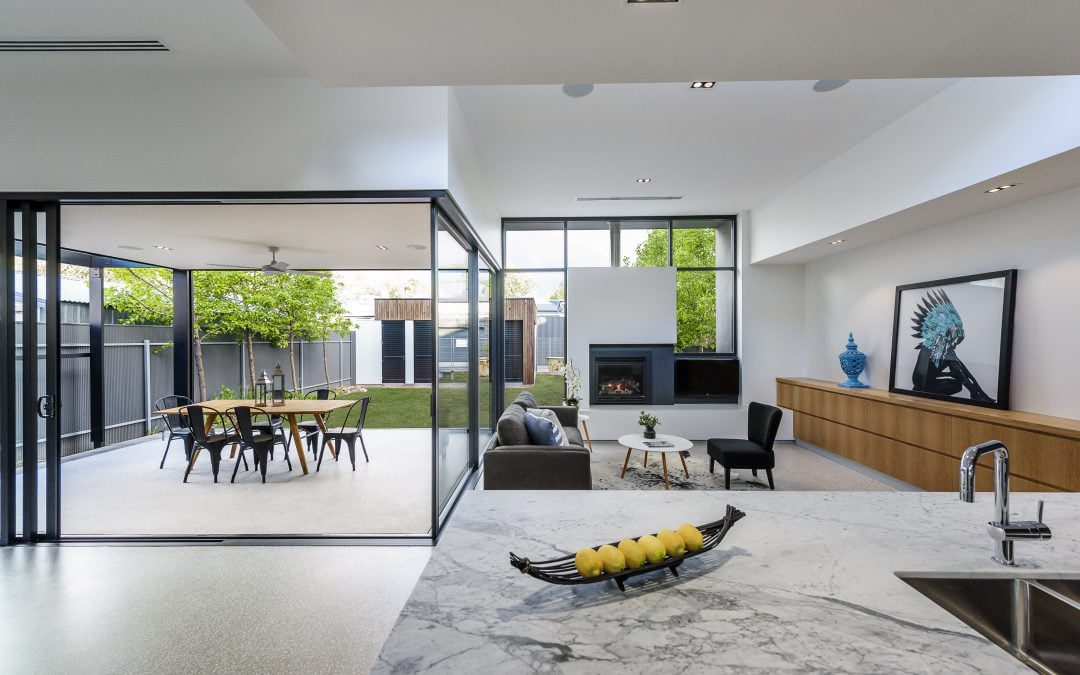Through a range of innovative approaches, the home extension builders Adelaide trusts, like BTF Constructions, are redefining the concept of home extensions. The process is no longer just about expanding living spaces but also about doing so in a manner that respects the environment.
Sustainable home extensions mark a commitment to eco-friendliness, shaping home design’s future. BTF Constructions is excited that these forward-looking practices are transforming homes and the very landscape of the construction industry. Let’s dive into some of them.
How can sustainable home extensions benefit the environment?
Sustainable home extensions often incorporate energy-efficient technologies like solar panels, LED lighting, and energy-efficient appliances. By relying on renewable energy sources, these extensions reduce the overall demand for fossil fuels, subsequently lowering carbon emissions.
This shift toward renewable energy contributes significantly to mitigating climate change, but there are many other forward-thinking practices to note as well, including:
- Using recycled and sustainable materials: Incorporating reclaimed wood, recycled steel, and environmentally friendly insulation reduces the demand for new resources. These constructions often prioritise locally sourced materials, minimising the environmental impact associated with transportation.
- Water-saving fixtures and technologies: Low-flow faucets, rainwater harvesting systems, and efficient irrigation methods all contribute to significant water conservation. Conserving water resources is crucial, especially in regions prone to droughts, ensuring the sustainability of local water supplies.
- Healthier indoor environments: The use of non-toxic paints, finishes, and adhesives, along with proper ventilation systems, ensures improved indoor air quality.
- Waste generation and recycling: Construction materials are chosen and used judiciously to minimise leftovers. Additionally, generated waste materials are sorted and recycled whenever possible, diverting a significant amount of waste from landfills.
It is also important to note that thoughtful architectural design in sustainable extensions considers the surrounding natural environment. By preserving existing trees, landscaping with native plants, and designing spaces that harmonise with nature, these extensions contribute to maintaining local biodiversity and preserving natural habitats for wildlife.
Pro tip: Want to ensure a sustainable home extension? Build with a focus on durability and minimal maintenance. Long-lasting materials and designs reduce the need for frequent repairs or replacements, thereby conserving resources and minimising the environmental impact associated with continuous renovations.
Are there any government incentives for choosing sustainable home extensions?
The South Australian government has taken significant strides to promote sustainability and environmental conservation by offering a range of incentives and rebates. These initiatives not only make eco-friendly technologies more accessible and affordable but also encourage residents, businesses, and groups to adopt sustainable practices.
These incentives cover many areas, promoting a holistic approach to environmental conservation, but one of the cornerstones of South Australia’s sustainability initiatives is promoting solar energy. Incentives for solar photovoltaic (PV) installations encourage residents, businesses, and commercial entities to harness clean energy from the sun, reducing dependence on fossil fuels and decreasing carbon emissions.
Another popular option is energy monitoring systems that empower individuals and businesses to track their energy usage effectively and incentives for EV charging stations to promote the use of electric vehicles.
The introduction of green roofs
Also known as living roofs or eco-roofs, green roofs represent a groundbreaking approach to sustainable development and eco-friendly architecture. By integrating a variety of vegetation, such as bushes, flowers, grass, and plants, directly onto the roofing system, green roofs offer many environmental benefits, making them a viable option wherever feasible.
One of the primary advantages of green roofs is their exceptional stormwater management capability. Traditional roofs often contribute to stormwater runoff, overwhelming drainage systems and leading to flooding and erosion. Green roofs, on the other hand, act as natural sponges. They absorb rainwater, slowing down the runoff process. This absorbed water is then used by the plants or gradually released into the atmosphere, reducing the strain on local water infrastructure.
Plants absorb carbon dioxide and release oxygen, so green roofs help mitigate air pollution. By incorporating greenery on rooftops, you are making the air cleaner and healthier for the surrounding community! They also provide natural insulation, reducing the energy needed for winter heating and summer cooling.
Evaluating the sustainability of building materials
Understanding the difference between energy efficiency and the ability to create a tight building envelope is important.
Energy efficiency in building materials refers to minimising energy consumption during the building’s operation. This involves using materials that contribute to effective insulation, reducing the need for heating or cooling. For instance, energy-efficient windows with double or triple glazing can prevent heat loss in winter and heat gain in summer, thus decreasing the reliance on HVAC systems. Similarly, well-insulated walls and roofs, utilising sustainable materials like recycled insulation or natural fibres, enhance the building’s thermal performance.
A tight building envelope means the property is well-sealed, preventing external elements such as rain, wind, dust, or pollutants from popping in. It also maintains the indoor environment by keeping conditioned air inside, whether warm or cool, during winter. A tight envelope reduces the energy needed to heat or cool the building, making it a critical factor in energy-efficient design.
The sustainable home extension builders Adelaide trusts
The BTF Constructions team specialises in sustainable, contemporary home alterations and additions throughout Adelaide. Our family-owned business ensures a highly personalised experience for every client and a deep understanding that sustainable home extensions are not just about adding space; they reflect improved functionality, practical living, and tailored lifestyle requirements.
Each sustainable home extension we design is a unique creation crafted to meet the specific needs and desires of our clients. Just like our diverse portfolio of homes, all extensions are unique. Yet, they all share a common thread – a commitment to sustainability and an in-depth understanding of our client’s vision. Let the BTF Constructions team start the process of making your home more comfortable and sustainable today.

